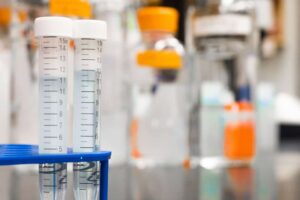A colonoscopy is a medical test using a long tube with a light and a camera on the end of it to look at the lining of the colon and rectum. Biopsies or polyp removal can be accomplished at the same time if needed. Polyps are abnormal growths on the lining of the bowel that can turn into cancer.
The following symptoms can determine your need for a colonoscopy:
- Bleeding from your anus
- Pain in your lower abdomen
- A change in bowel movements, especially diarrhea
- Extreme unexplained weight loss
Colonoscopy preparation
Comfort is important during the process of an exam. In order to be as comfortable as possible, planning is needed before, during and after your procedure. Be sure to ask a lot of questions of your doctor before the procedure as steps to prepare can vary from patient to patient.
Medication adjustments
Be sure to discuss with your doctor the medications you are currently on. Medications your take for your everyday health care may cause issues. However, some can be adjusted to make the colonoscopy easier for both you and your doctor. You want to take supplements that contain iron and make sure to tell your doctor of any blood thinners you are currently prescribed.
Clean yourself out
For most people, the most difficult part of the procedure is drinking the liquid for cleaning out the colon. We have tried to make this less difficult with newer preparations. For a liquid diet you can eat and drink:
- Broth soups
- Lemon, lime or orange gelatin
- Plain tea or coffee (no milk or sugar)
- Lemon, lime or orange sports drinks
- Strained juice such as apple juice or white grape juice
- Water
Your doctor will prescribe you some laxatives to help clean yourself out. Be sure to drink plenty of water during this time to keep yourself hydrated for your colonoscopy. Sometimes doctors may also prescribe an enema to help clear the way.
Prep for after surgery
Because of sedatives and anesthesias that may have been used during your colonoscopy, you should not drive for the rest of the day. Due to this downside, you may have to make pick-up plans for after your procedure.
Colonoscopy procedure
For the procedure, you will have a gown and be administered an IV. With the IV, they can give you pain medications and sedatives. This also allows the staff to give you any other previously discussed medications to keep you comfortable.
After laying on the table, the colonoscope is inserted into your rectum and colon. Once inside your large intestine, the flexible scope will inflate your intestines so that it may get a better view of the walls inside. This long flexible tube then sends video back to the doctor so that he may carefully examine any signs of cancer or ulcerative colitis.
During this process, the doctor can insert tools into the flexible tube so he can take biopsies of tissue and remove polyps. A colonoscopy can reach the full colon. Sometimes a flexible sigmoidoscopy scope may be used first as a virtual colonoscopy. It is smaller, however, it can not go very far into the colon. A virtual colonoscopy can determine if a full colonoscopy is needed.
Colonoscopies can typically take up to 60 minutes. During the procedure may be moved around to help see all angles of your colon.

What the results mean
If the doctor does not find any abnormalities or polyps your tests will come back as negative. If your results are negative, you may not need another screening test for 10 years —however, that depends on your medical history. If you have a history of polyps you may need another colonoscopy in 1 to 5 years. Especially if you are over the age of 50.
However, if something is found, the results are considered positive. Most polyps aren’t cancerous, but they may be precancerous. When a polyp is removed or a biopsy is taken, they will be sent to a lab for testing. You will be put under surveillance so that more procedures can be taken to remove any new polyps found. If tests come back positive for cancer, we will work to guide you through the treatment options at your follow-up appointment.
Side effects and recovery
After a colonoscopy, you will be placed in an outpatient center until your anesthesia or sedatives wear off. This can take 1 to 2 hours. You may feel cramping in your abdomen or have the sensation of bloating. This is common for about an hour after the exam.
Your friend or family member you’ve tasked to take care of you for the remainder of the day will receive instructions on how to care for you. You will not want to operate machinery for the first 24 hours after. You will be allowed to eat regularly again by the next day.
Most medical procedures do come with some risks. If any of the following happens, please consult your doctor:
- Bleeding
- Severe abdominal pain
- Troubles using the restroom
Discuss Your Colonoscopy with an Expert
At Nevada Surgery and Cancer Care, our experts help to ensure the most comfortable colonoscopy you can get in Las Vegas. Our experienced staff is well versed in knowing what signs to look for during an exam to catch any signs of cancer before it starts. Contact us today and discuss with us how you can screen for cancer in the most comfortable and precise way possible.
